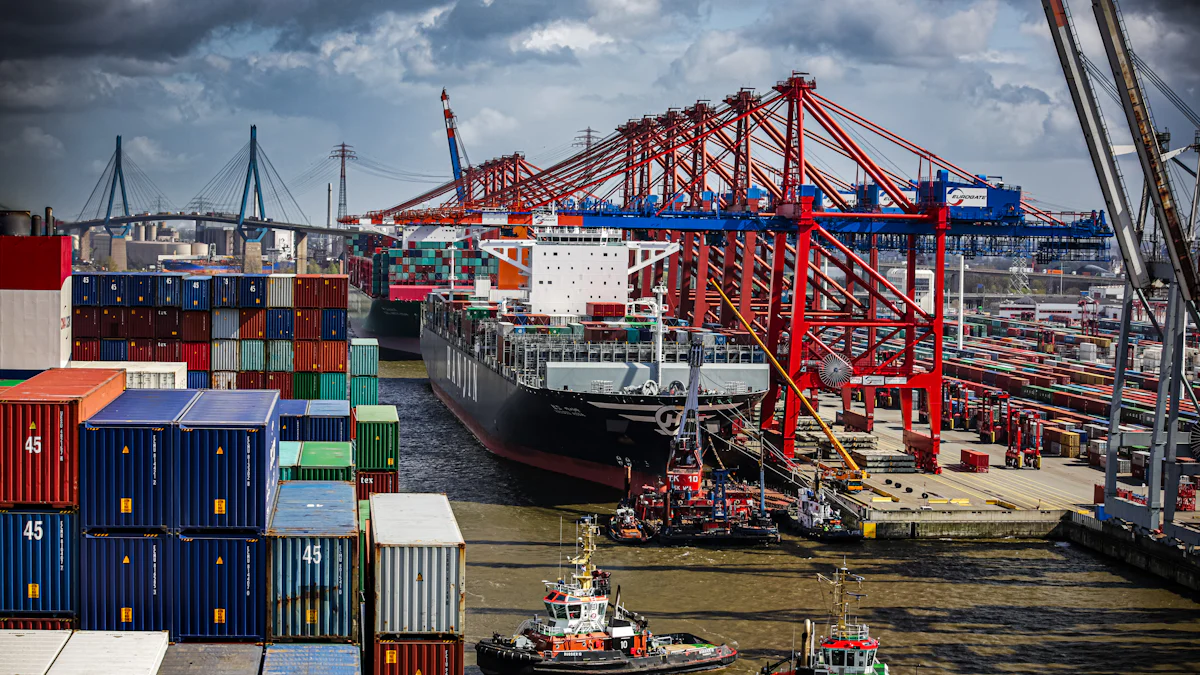Why Cross-Border Freight Solutions Are Vital for Global Trade

In the realm of global trade, the significance of freight solutions cannot be overstated. These solutions serve as the backbone of international commerce, ensuring the smooth movement of goods across borders. This blog aims to shed light on the necessity and advantages of embracing efficient freight solutions in today's interconnected world. By exploring the complexities and benefits associated with cross-border logistics, businesses can unlock new opportunities for growth and success.
Understanding Cross-Border Freight Solutions

When considering freight solutions for cross-border transportation, one must navigate through a maze of challenges and requirements. The logistics involved in moving goods across borders present unique obstacles that demand careful attention.
The Complexities of Cross-Border Freight Transportation
Logistics Challenges
Navigating the intricate web of supply chain logistics requires precision and expertise. Companies must strategize to overcome issues related to inventory management, warehouse operations, and transportation coordination.
Customs Procedures
Compliance with customs procedures is a critical aspect of cross-border freight transportation. Ensuring that all necessary documentation is in order and adhering to specific regulations are paramount for seamless transit across international boundaries.
Regulatory Compliance
Meeting the diverse regulatory requirements of different countries demands a deep understanding of legal frameworks. Adhering to various rules and standards is essential to avoid delays or penalties during the shipping process.
Expertise Required for Effective Solutions
Knowledge of Traffic Flows
Understanding the ebb and flow of traffic patterns is crucial for optimizing freight movements. By analyzing traffic data and trends, companies can make informed decisions that enhance efficiency and reduce transit times.
Understanding Regulations
Staying abreast of ever-evolving regulations is key to successful cross-border freight solutions. Companies must proactively monitor changes in trade policies and customs laws to ensure compliance at all times.
Efficient Shipment Execution
Executing shipments promptly and accurately is a cornerstone of effective freight solutions. Timely delivery, proper handling of goods, and proactive communication with stakeholders are vital components for successful cross-border transportation operations.
Benefits of Using CTPAT-Certified Companies
Enhanced Security
Jan Raymond, a specialist in C-TPAT Certification Benefits, emphasizes the significance of site security. Thieves target vulnerabilities, and by implementing C-TPAT compliance practices, companies become unattractive targets. This proactive approach not only reduces losses from theft but also leads to lower insurance premiums.
Streamlined Processes
In the realm of cross-border freight solutions, Jan Raymond highlights personnel security as a critical aspect. The rigorous security checks associated with C-TPAT certification act as a deterrent for questionable individuals seeking employment. By reducing the likelihood of hiring illegal personnel, companies enhance the overall integrity of their workforce.
Reduced Risk of Delays
When it comes to data security, Jan Raymond underscores the importance of safeguarding information systems. By fortifying these systems through C-TPAT compliance, companies significantly decrease the risk of data breaches and unauthorized access to sensitive data.
Importance of End-to-End Services

Seamless Shipping Across North America
Coordination Between Countries
Enhanced coordination between countries ensures a smooth flow of goods across borders.
Streamlined communication channels facilitate efficient customs clearance processes.
Collaborative efforts lead to reduced transit times and improved supply chain visibility.
Integrated Logistics Solutions
Integration of logistics services offers a comprehensive approach to managing cross-border shipments.
Centralized control over transportation, warehousing, and distribution enhances operational efficiency.
Seamless data sharing among stakeholders optimizes the entire shipping process.
Avoiding Unnecessary Costs and Delays
Cost-Efficiency Strategies
Implementing cost-efficient strategies minimizes expenses associated with cross-border freight.
Utilizing optimized routes and consolidation techniques reduces overall shipping costs.
Strategic partnerships with reliable carriers lead to competitive pricing and enhanced cost savings.
Time Management
Efficient time management practices ensure timely delivery of goods across international borders.
Synchronized scheduling of shipments minimizes delays and prevents disruptions in the supply chain.
Proactive monitoring and real-time tracking enable swift responses to any unforeseen logistical challenges.
Role of Full-Service Providers
Offering Bilingual Support
IT service providers emphasize the value of bilingual support in facilitating seamless communication between stakeholders. By offering language assistance, companies can bridge cultural gaps and ensure clarity in all interactions. This inclusive approach enhances collaboration and fosters strong relationships with clients from diverse backgrounds.
Comprehensive Service Packages
When selecting full-service providers, businesses benefit from comprehensive service packages that address their unique needs. These tailored solutions encompass a wide range of offerings, including IT infrastructure management, cybersecurity measures, and software development support. By opting for holistic service packages, companies can streamline their operations and focus on core business activities.
Real-World Examples and Case Studies
Drawing insights from real-world examples and case studies is instrumental in understanding the impact of full-service providers. By examining successful implementations and practical applications, businesses gain valuable knowledge on the benefits of partnering with IT service experts. These concrete illustrations serve as testaments to the effectiveness of comprehensive IT solutions in driving growth and innovation across industries.
Embracing reliable cross-border freight logistics is paramount for businesses to thrive in the global market.
Maintaining a smooth supply chain ensures timely delivery of goods, enhancing customer satisfaction.
Businesses should consider cross-border freight solutions to mitigate risks and optimize operational efficiency.
The growth of cross-border freight brings concerns on capacity and driver shortage, emphasizing the need for strategic partnerships with carriers.
An uptick in computer shipments at the southern border boosts cross-border freight, highlighting opportunities for diversifying the supply chain model.
See Also
Revealing Innovative Approaches to Cross-Border E-commerce Suppliers
Addressing Globalized World Challenges in Supply Chain Growth
Revolutionizing Supply Chain Management with Cloud Solutions
